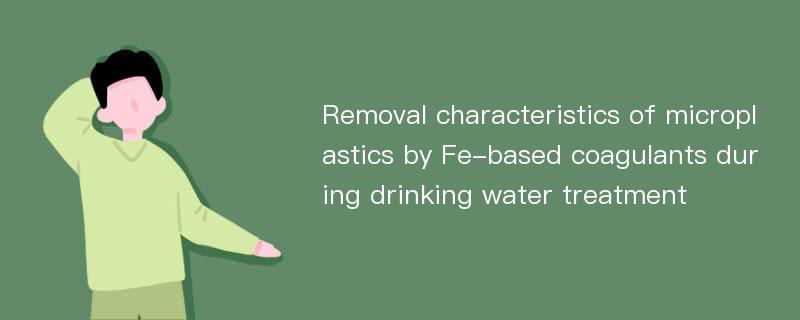
论文摘要
Microplastics have caused great concern worldwide recently due to their ubiquitous presence within the marine environment. Up to now, most attention has been paid to their sources,distributions, measurement methods, and especially their eco-toxicological effects. With microplastics being increasingly detected in freshwater, it is urgently necessary to evaluate their behaviors during coagulation and ultrafiltration(UF) processes. Herein, the removal behavior of polyethylene(PE), which is easily suspended in water and is the main component of microplastics, was investigated with commonly used Fe-based salts. Results showed that although higher removal efficiency was induced for smaller PE particles, low PE removal efficiency(below 15%) was observed using the traditional coagulation process, and was little influenced by water characteristics. In comparison to solution pH, PAM addition played a more important role in increasing the removal efficiency, especially anionic PAM at high dosage(with efficiency up to 90.9%). The main reason was ascribed to the dense floc formation and high adsorption ability because of the positively charged Fe-based flocs under neutral conditions. For ultrafiltration, although PE particles could be completely rejected,slight membrane fouling was caused owing to their large particle size. The membrane flux decreased after coagulation; however, the membrane fouling was less severe than that induced by flocs alone due to the heterogeneous nature of the cake layer caused by PE, even at high dosages of Fe-based salts. Based on the behavior exhibited during coagulation and ultrafiltration, we believe these findings will have potential application in drinking water treatment.
论文目录
文章来源
类型: 期刊论文
作者: Baiwen Ma,Wenjing Xue,Yanyan Ding,Chengzhi Hu,Huijuan Liu,Jiuhui Qu
来源: Journal of Environmental Sciences 2019年04期
年度: 2019
分类: 工程科技Ⅰ辑,工程科技Ⅱ辑
专业: 建筑科学与工程
单位: Key Laboratory of Drinking Water Science and Technology,Research Center for Eco-Environmental Sciences,Chinese Academy of Sciences,College of Environment and Safety Engineering,Qingdao University of Science and Technology,University of Chinese Academy of Sciences,School of Environment,State Key Joint Laboratory of Environment Simulation and Pollution Control,Tsinghua University,Research Center for Water Quality and Ecology,Tsinghua University
基金: supported by the National Key R&D Program of China (No. 2016YFC0400802),the National Natural Science Foundation for Young Scientists of China (No. 51608514),a special fund from the Key Laboratory of Drinking Water Science and Technology,Research Center for EcoEnvironmental Sciences,Chinese Academy of Sciences (No. 17Z03KLDWST)
分类号: TU991.2
页码: 267-275
总页数: 9
文件大小: 1983K
下载量: 112
